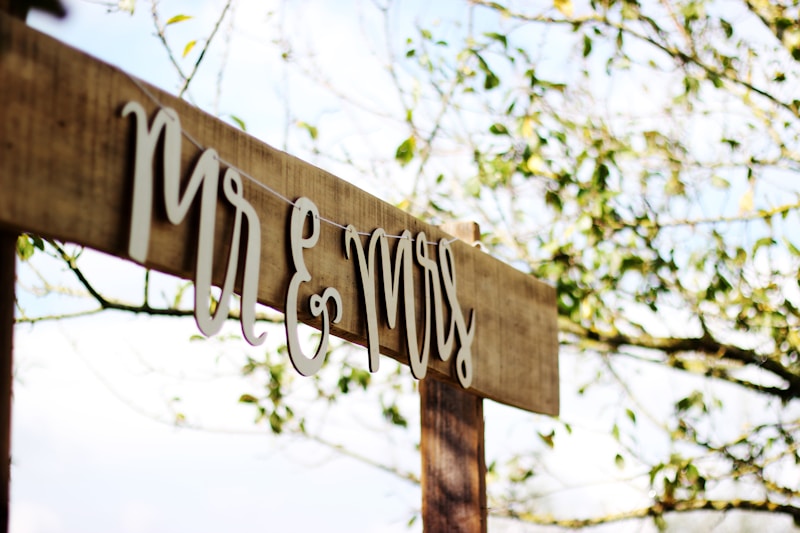Embracing Local Production in Wedding Dresses: A Sustainable Choice for Your Big Day
Embracing Local Production in Wedding Dresses: A Sustainable Choice for Your Big Day
Understanding the Importance of Local Production in Wedding Dresses
In recent years, the trend of local production in wedding dresses has gained significant momentum. This shift is not just a passing fad; it reflects a broader commitment to sustainability, community support, and unique craftsmanship. With increasingly environmentally-conscious consumers, brides are more inclined to seek out local designers who can provide beautiful, handcrafted wedding dresses while minimizing waste and promoting ethical practices.
Why Choose Local Production?
When selecting a wedding dress, brides often face numerous decisions, from the style and fabric to the designer. However, choosing local production can provide several unique advantages.
1. Sustainability
Local production reduces the carbon footprint associated with international shipping and the large-scale manufacturing of wedding dresses. By supporting local designers, brides can contribute to a more sustainable industry. Additionally, many local designers use eco-friendly materials, ensuring that the dress not only looks good but does good for the planet.
2. Unique Designs
Local designers often offer distinctive styles that set them apart from mass-produced options. With a smaller production scale, each dress can be more personalized, reflecting the bride's unique style and story. This exclusivity is something brides cherish, making local production a compelling option.
3. Supporting Local Economies
Investing in local production means supporting the local economy and fostering small businesses. Every purchase helps sustain jobs and can lead to growth in the community. This economic support is especially vital in the current climate, where many small businesses have struggled.
Challenges and Considerations
Despite the numerous benefits, brides should consider a few challenges associated with local production in wedding dresses.
1. Availability of Styles and Sizes
Local designers may offer fewer options in comparison to larger, global brands. It’s essential to research local boutiques and designers to determine if their offerings align with what you envision. Brides should also assess whether they can accommodate different sizes, as customization might be necessary.
2. Cost Factors
While supporting local production is admirable, it’s crucial to understand that handmade dresses may come at a premium. Budget-conscious brides need to balance quality, craftsmanship, and cost. However, many local designers offer a range of price points and customization options, making it easier to find something that fits your budget.
Exploring Options for Local Wedding Dress Production
For brides interested in exploring local production, here are some steps to consider:
| Step | Description |
| Research | Look up local designers and boutiques in your area. |
| Visit | Schedule visits to local shops to try on dresses and understand the offerings. |
| Communicate | Engage in conversations with designers about customization and sustainability efforts. |
| Budget | Establish a budget and inquire about pricing options. |
| Timeline | Factor in the timeline for production and fittings. |
Real-Life Examples of Local Wedding Dress Designers
There are numerous inspiring stories of local wedding dress designers who have embraced the concept of local production. Here are a few examples:
- Catherine de Bruex, based in Paris, is known for her bespoke wedding dresses made from local French fabrics, emphasizing sustainable practices.
- Sarah Seven from Portland, Oregon, blends modern and vintage elements to create dresses that speak to brides seeking unique aesthetics.
- Leanne Marshall, renowned for her ethereal and flowy gowns, sources materials sustainably and is committed to environmental stewardship.

Frequently Asked Questions about Local Production in Wedding Dresses
What is the average cost of a locally produced wedding dress?
The cost of locally produced wedding dresses varies widely depending on the designer, style, materials used, and the level of customization. On average, brides can expect to pay anywhere from $800 to $3,000 for a handmade dress. Some designers may offer more budget-friendly options, so it's important to discuss prices during consultations.
How long does it take to create a locally produced wedding dress?
Generally, the timeline for creating a custom wedding dress can range from 3 to 6 months. This allows time for design consultations, fittings, and alterations. It's advisable to start this process early to ensure that you have enough time to make adjustments as needed.
Can I customize my wedding dress if I go local?
Absolutely! Many local designers encourage customization, allowing brides to incorporate their personal style into the dress. This could include changes in fabric, design details, and even the overall silhouette. This personalization is one of the most meaningful aspects of choosing a local designer.
Conclusion: The Future of Local Production in Wedding Dresses
As we witness a growing movement towards sustainability and personalized fashion, local production in wedding dresses is sure to play a significant role in shaping the future of the bridal industry. Brides benefit from unique designs, sustainable practices, and the opportunity to support their local communities. Being part of this movement not only enhances the joy of selecting the dress but also contributes to making the world a better place.
As you embark on your wedding planning journey, consider the implications of choosing local production for your wedding dress. Embrace the opportunity to work closely with designers, make your dress truly your own, and support local economies. Remember, your wedding dress is not just an outfit; it’s a representation of your values and your love story.
